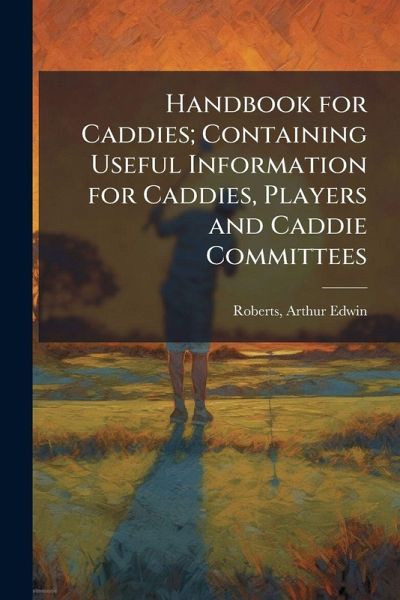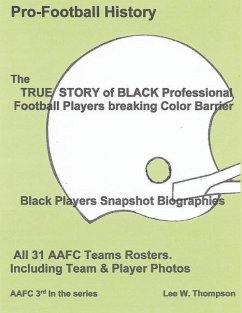
Handbook for Caddies; Containing Useful Information for Caddies, Players and Caddie Committees
Versandkostenfrei!
Versandfertig in über 4 Wochen
14,99 €
inkl. MwSt.

PAYBACK Punkte
7 °P sammeln!
Handbook for Caddies, compiled by Arthur Edwin Roberts, offers a glimpse into the world of golf at the beginning of the 20th century. This practical guide provides essential information for caddies, players, and caddie committees, detailing the responsibilities and skills required for effective caddying. From explaining golf terminology and etiquette to offering advice on club selection and course management, this handbook serves as an invaluable resource for anyone involved in the game. Originally published in 1915, this book provides a unique historical perspective on golf culture and the ro...
Handbook for Caddies, compiled by Arthur Edwin Roberts, offers a glimpse into the world of golf at the beginning of the 20th century. This practical guide provides essential information for caddies, players, and caddie committees, detailing the responsibilities and skills required for effective caddying. From explaining golf terminology and etiquette to offering advice on club selection and course management, this handbook serves as an invaluable resource for anyone involved in the game. Originally published in 1915, this book provides a unique historical perspective on golf culture and the role of the caddie. It offers insights into the development of the sport and the changing dynamics between players and their assistants. Whether you are a golf enthusiast, a history buff, or simply curious about the origins of the game, "Handbook for Caddies" is a fascinating read. This work has been selected by scholars as being culturally important, and is part of the knowledge base of civilization as we know it. This work was reproduced from the original artifact, and remains as true to the original work as possible. Therefore, you will see the original copyright references, library stamps (as most of these works have been housed in our most important libraries around the world), and other notations in the work. This work is in the public domain in the United States of America, and possibly other nations. Within the United States, you may freely copy and distribute this work, as no entity (individual or corporate) has a copyright on the body of the work. As a reproduction of a historical artifact, this work may contain missing or blurred pages, poor pictures, errant marks, etc. Scholars believe, and we concur, that this work is important enough to be preserved, reproduced, and made generally available to the public. We appreciate your support of the preservation process, and thank you for being an important part of keeping this knowledge alive and relevant.












